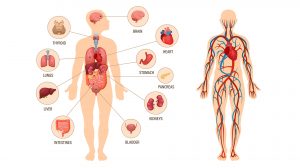Table of Contents
Definition
noun
plural: fructooligosaccharides
fruc·to·ol·i·go·sac·cha·ride, ɪhɡəʊˈsækəɹaɪd
An oligosaccharide made up of fructose residues, commonly occurring in many plants (e.g. blue Agave plant, Jerusalem artichoke, and yacón), used chiefly as a sweetener in the food industry
Details
Overview
Fructooligosaccharide is an example of an oligosaccharide. An oligosaccharide is a type of carbohydrate made up of saccharides. Oligosaccharides differ from polysaccharides (another type of carbohydrate) based on the number of saccharides that make them up. In essence, an oligosaccharide contains fewer saccharides (about three to ten) than a polysaccharide does. Nevertheless, both of them are considered as complex carbohydrates as opposed to simple carbohydrates (sugars) that are made up of one or two saccharides, readily digested, and serve as a rapid source of metabolic energy. In contrast, complex need more time to be digested and metabolized. They often are high in fiber. Unlike simple carbohydrates, complex carbohydrates are less likely to cause spikes in blood sugar.
Properties
Fructooligosaccharides are organic compounds just as the other carbohydrates due to the presence of carbon and C-C and C-H covalent bonds. It has a sweetish taste and as such is extracted and processed for use in the food industry as alternative sweetener (in place of sucrose, the common table sugar). It is less sweet than sucrose; its sweetness relative to sucrose is 30-50%. Fructooligosaccharide is a short polymer of fructose. Fructose molecule is a ketose; it has a reducing group (carbonyl) at carbon 2. This is in contrast to an aldose that has its carbonyl group at carbon 1.
Common biological reactions
Common biological reactions
Fructooligosaccharide is the shorter chain of a fructan. Fructans are polymers of the monosaccharide fructose. Plants such as blue Agave plant, yacón, asparagus, leeks, garlic, onions, wheat, artichoke, and grass biosynthesize fructans as a storage carbohydrate. They are produced via dehydration synthesis. In essence, monomers of fructose are linked together by a glycosidic bond, consequently forming a chain with the concomitant release of water molecules. Short-chain fructooligosaccharides are those consisting of ≤9 fructose molecules in unbranched chain.1 Plants pack their energy reserves into condensed forms for later use.
Common biological reactions
Fructooligosaccharide is a dietary fiber. It means it will not be digested and absorbed in the small intestine. Instead, it will pass through the large intestine where it will be metabolized by the colonic flora. Human saliva also does not have the enzyme that can cleave the glycosidic bonds in fructooligosaccharides. Thus, metabolism of fructooligosaccharide will only begin when it reaches the colon where it will be fermented by anaerobic bacteria, especially Bifidobacterium. These bacteria have fructose-6-phosphate phosphoketolase, which is the enzyme used to ferment them.
Biological importance
Dietary oligosaccharides are an essential energy source. Fructooligosaccharides, in particular, are an important source of dietary fiber. They are extracted from plants that produce them (chiefly, blue Agave, Jerusalem artichoke, and yacón). They are also present in certain edible fruits and vegetables, such as bananas, leeks, onions, garlic, and asparagus. In these plants, they serve as storage oligosaccharides. In humans, they may be employed as a sweetener and a dietary fiber. They have much lower caloric value and low glycemic index, which make them suitable for diabetics. Also, they may serve as prebiotics. (N.B.: Prebiotics should not be confused with probiotics. Prebiotics are those that promote the growth of beneficial gut microorganisms whereas probiotics are substances containing the beneficial microorganisms.) Humans cannot digest fructooligosaccharides (hence, have lower caloric values). These oligosaccharides are passed on to the large intestine where they are fermented and metabolized by colonic bacteria. They promote the growth especially of the beneficial bacterium, Bifidobacterium. Nevertheless, they may also promote the growth of other colonic bacteria, such as Escherichia coli, which is an opportunistic pathogen. 2 Dietary fructooligosaccharides have also been asssociated with lowered cholesterol and reduced blood sugar, based on studies.2
Health risks
The recommended consumption amount of fructooligosaccharides is 20 g per day. Too much fructooligosaccharides in the diet may cause intestinal upset, abdominal bloating, flatulence, and pain or cramps. And unlike sugar alcohols that also serve as alternative sweeteners but do not cause tooth decay, fructooligosaccharides may promote dental caries to about the same extent as sucrose.1 Some people may also be allergic or sensitive to them. Allergic reactions may include itching in the throat, puffiness, dizziness, hives, itching, and eczema. Severe allergic reaction may lead to life-threatening conditions, such as anaphylactic shock. Fructooligosaccharides are also not recommended to people with digestive disorders, e.g. irritable bowel syndrome. Individuals with improper metabolism of fructose may also need to avoid foods containing fructooligosaccharides since they are made up of fructose. Fructose intolerance is a hereditary disease with symptoms similar but milder than those of irritable bowel syndrome.2
Terminology
Fructooligosaccharide and oligofructose are commonly used interchangeably. However, there are references wherein they are regarded as different and distinct. A fructooligosaccharide, in particular, is a polymer made up of 2 to 4 fructose molecules with a glucose molecule as the last in the chain. Oligofructose is a polymer made up of up to ten fructose molecules. A polymer of more than ten fructose molecules is called inulin.
Supplementary
Abbreviation(s)
- FOS
Synonym(s)
Further reading
See also
- oligosaccharide
- fructose
- prebiotic
Reference
- Fructo-oligosaccharides (Oligofructose) Benefits, Side Effects. (2017, September 12). Retrieved from ://www.nutrientsreview.com/carbs/soluble-fiber-fructooligosaccharides-oligofructose.html Link
- Bubnis, D. (2018, January 12). Fructooligosaccharides: Risks, side effects, and benefits. Retrieved from ://www.medicalnewstoday.com/articles/319299.php Link
© Biology Online. Content provided and moderated by Biology Online Editors







